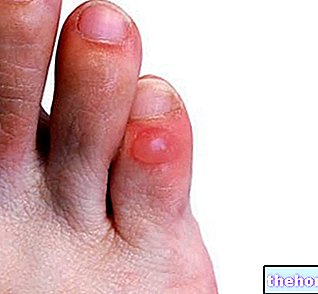Key points
Lymphedema is a stagnation of lymph in the various parts of the body, an expression of an impairment of the lymphatic system.
Lymphedema: causes
Primary lymphedema is caused by congenital abnormalities of the lymphatic system.
Secondary lymphedema can result from pathologies (adenopathies, diabetes, lymphangitis, bacterial cellulitis, erysipelas, lymphatic filariasis) or derive from the surgical removal of the lymph nodes (performed, for example, to remove tumor masses).

The most common symptom of lymphedema is swelling in an arm or leg. Other symptoms include: alteration of the color of the skin, difficulty in moving the affected limb, skin susceptible to infections, itching and tension of the skin.
Lymphedema: therapy
There is no completely definitive therapy. To improve the symptoms of lymphedema, complex decongestive therapy is recommended (Lymphatic drainage, Bandage, Pressotherapy, Elastic braces). Surgery is reserved for cases of extreme gravity.
Definition of lymphedema
Synonymous with lymphatic obstruction, lymphedema represents an abnormal and exaggerated accumulation of lymphatic fluid in the various parts of the body. More simply, lymphedema is defined as any stagnation of fluid in the tissues, expression of a blockage or impairment of the lymphatic system.
Lymphatic obstruction is a typical condition of the lower or upper limbs.
- As we know, the lymphatic circulation is a very important natural defense system of the organism against infections, therefore essential to remove toxic substances and liquids that filter from the blood capillaries. The lymph, flowing along the lymphatic vessels, is conveyed into the lymph nodes, which are specific filtering centers used for purification of the same.
When normal lymphatic flow is obstructed, fluid builds up, causing the typical swelling that characterizes lymphedema. Lymphatic obstruction constitutes a debilitating chronic disease which is constantly growing in the Italian population.
Unfortunately, there is no specific and totally decisive cure for lymphedema: however, lymphedema can be managed through specific exercises aimed at controlling swelling, including manual lymphatic drainage.
Causes
We have analyzed that lymphedema occurs when the lymphatic vessels are unable to adequately drain the lymph. But what are the triggering causes? Why does this abnormal accumulation of interstitial fluid occur? Under what circumstances?
Depending on the cause triggered, lymphedema is classified into primary and secondary.
Primary lymphedema
The triggering cause of the primary lindefema resides in congenital anomalies of the lymphatic system. This variant of lymphedema occurs more frequently in women. There are several variants, based on the age at which the symptoms of lymphedema occur:
- Congenital primary lymphedema: represents 10-25% of all forms of primary lymphedema. It is a particular form of lymphatic occlusion clearly evident from birth. Congenital lymphedema is a condition typical of women, and tends to involve the legs almost exclusively. It is estimated that 2% of congenital forms are caused by the hereditary disease of Milroy.
- Early primary lymphedema: this is the most common form of primary lymphedema (65-80%). By definition, early lymphedema becomes clinically evident after birth but before age 35: typically, the affected patient exhibits the first symptoms during puberty. Again, women are more affected than men.
- Late primary lymphedema (or Meige's disease): an affected person shows the first symptoms after age 35. The late form accounts for 10% of primary lindephemes.
Secondary lymphedema
As the term itself suggests, this variant of lymphedema is secondary to various pathologies; therefore it represents an acquired dysfunction of the lymphatic vessels, originally healthy and perfectly functional.
Secondary lymphedema affects both sexes equally.
Worldwide, the most frequent cause of secondary lindefema is lymphatic filariasis, an infection affecting lymph nodes and lymphatic vessels, caused by the parasite Wuchereria bancrofti.
Secondary lymphedema can also be caused by other diseases:
- Adenopathies (or lymphadenopathies)
- Diabetes
- Surgery / radiotherapy for throat cancer → neck and head lymphedema
- Surgery for the treatment of colon cancer, ovarian cancer or cancer of the uterus (also associated with radiotherapy) → lymphedema of the lower limbs
- Removal of axillary lymph nodes after breast cancer surgery → arm level lymphedema
- Removal of lymph nodes for diagnostic purposes (biopsy)
- Removal or damage to the lymph nodes after surgery to treat cancer of the prostate or testicles → lymphedema of the lower limbs
- Lymphangitis, bacterial cellulitis, erysipelas
- Pathological obesity: lymphedema occurs due to a literal "crushing" of the lymphatic vessels and lymph nodes
- Long-term therapy with tamoxifen (the drug - used to treat breast cancer - can cause blood clots and predispose the patient to deep vein thrombosis) → lower limb lymphedema
- Severe burns
From what has been said, it is easy to understand how the efficiency of the lymphatic system is essential to protect the body from infections: in the presence of lymphedema, the defense function is weakened, therefore the patient is more exposed and susceptible to infections.
In the next article we will analyze the characteristic symptoms of lymphedema and the currently available therapies.
Lymphedema: Symptoms and Therapies "




-cos-sintomi-e-primo-soccorso.jpg)























